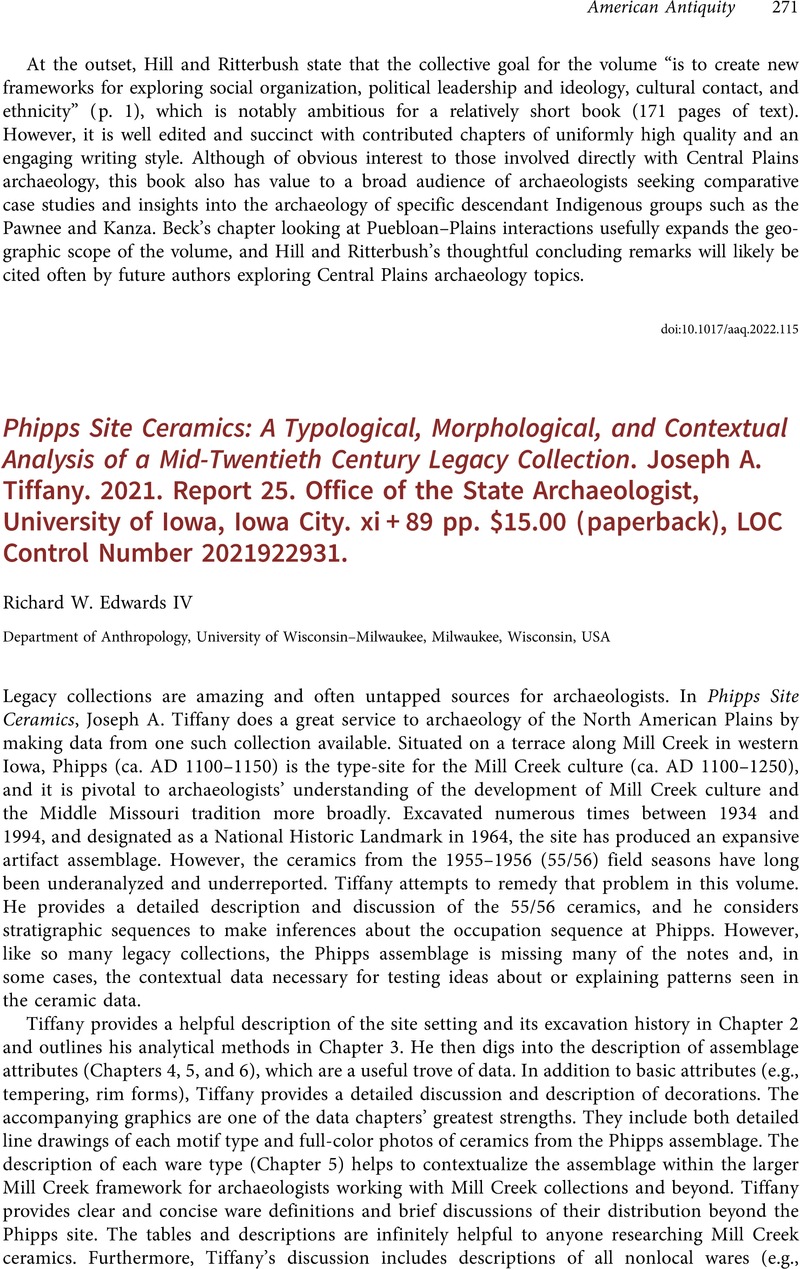No CrossRef data available.
Article contents
Phipps Site Ceramics: A Typological, Morphological, and Contextual Analysis of a Mid-Twentieth Century Legacy Collection. Joseph A. Tiffany. 2021. Report 25. Office of the State Archaeologist, University of Iowa, Iowa City. xi + 89 pp. $15.00 (paperback), LOC Control Number 2021922931.
Review products
Phipps Site Ceramics: A Typological, Morphological, and Contextual Analysis of a Mid-Twentieth Century Legacy Collection. Joseph A. Tiffany. 2021. Report 25. Office of the State Archaeologist, University of Iowa, Iowa City. xi + 89 pp. $15.00 (paperback), LOC Control Number 2021922931.
Published online by Cambridge University Press: 30 January 2023
Abstract
An abstract is not available for this content so a preview has been provided. Please use the Get access link above for information on how to access this content.

- Type
- Review
- Information
- Copyright
- Copyright © The Author(s), 2023. Published by Cambridge University Press on behalf of the Society for American Archaeology


